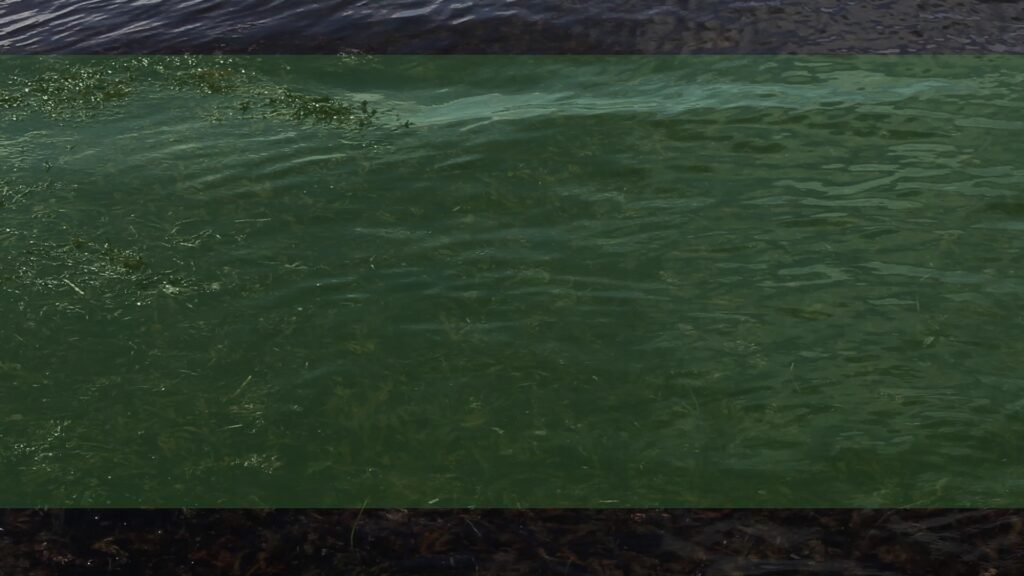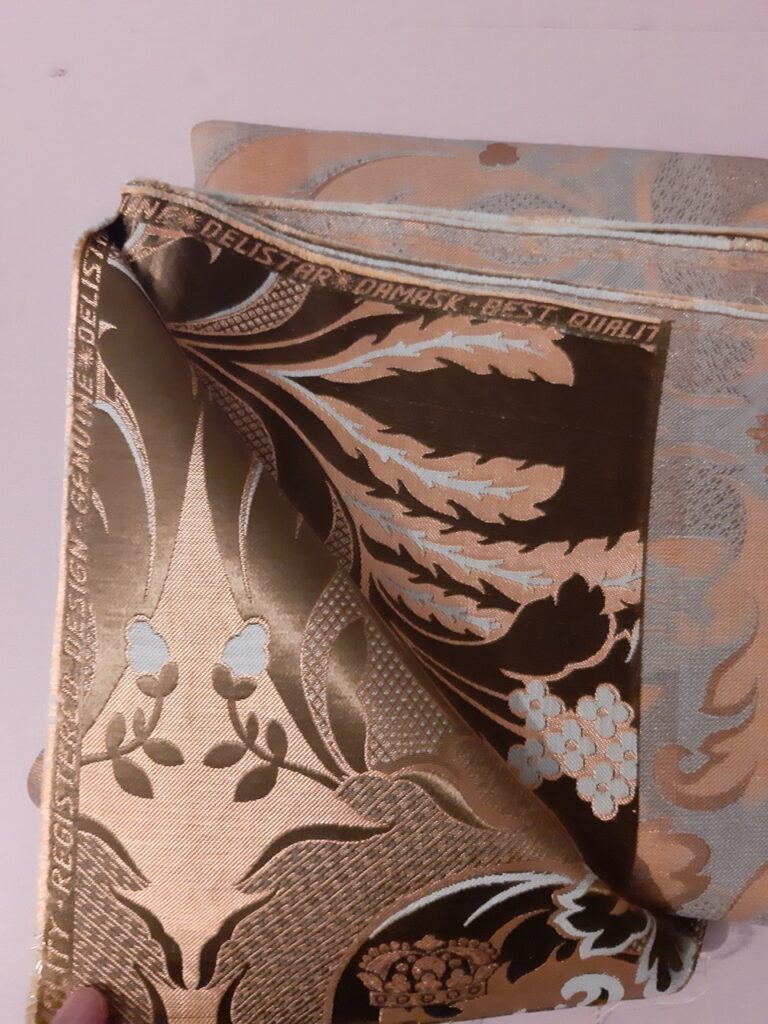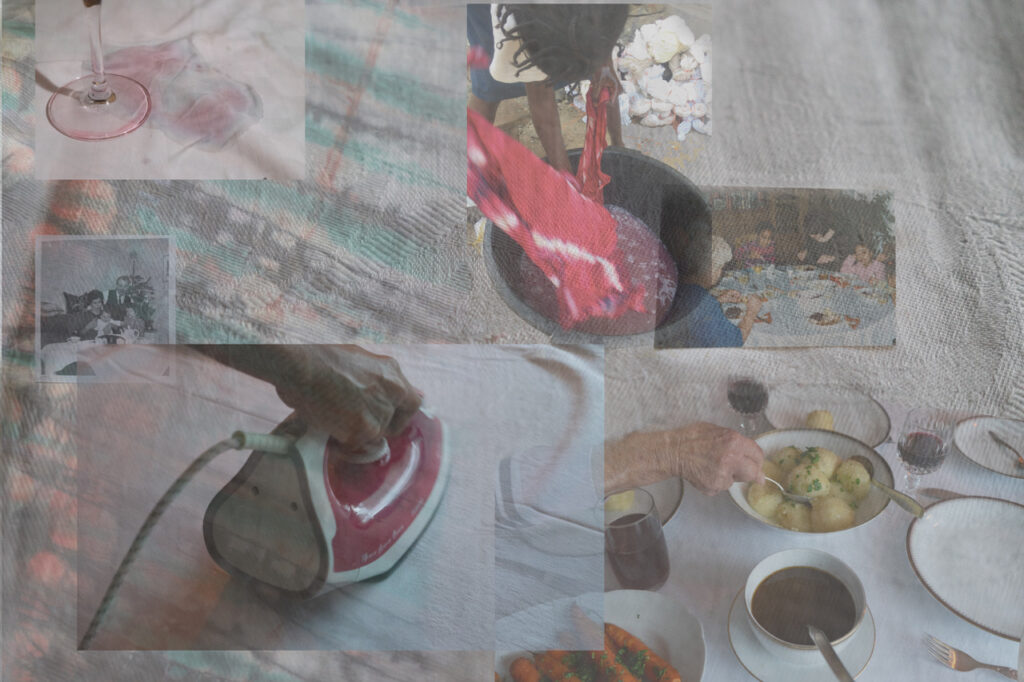These case studies mark the individual engagement of the researchers in this project.
Lace. To Lace. Interlace
Anette Baldauf with Katharina Weingartner

1. Lace, noun
… a fine open fabric of cotton or silk, made by looping, twisting, or knitting thread in patterns and used especially for trimming garments.
2. To lace, verb
.. to add something or to adulterate with a substance
3. To interlace, verb
.. cross or be crossed intricately together; interweave.
A small town in the Western part of Austria has long been known for high-quality embroidery. When Europe’s textile production folded in the mid 20th century, Lustenau found a prospering market in Nigeria, where lace came to outfit the era of oil and independence. In strange encounters Austrian manufacturers and sales’ representatives met with Lagos’ traders and merchants, and the many ghosts lingering in the hidden seams of colonialism. Looking at this overpopulated microcosm the project explores lace-making as a means to both, trace and challenge racialized relations in Austria. It starts off with the choice to cut a thread and pull. The unraveling reveals a surface marked by piercing, locking, tearing – imprints of encounters built on shared interests as well as the lasting legacy of proclaimed superiority and strategically employed innocence. It also produces a new thread for potential re-making. Is it possible to witness and at the same time undo racialized thinking, acting and feeling? To lace, the verb, means to add a new substance. Can we look at lace history and recognize injustice while at the same time enriching our perspective, carefully and with curiosity, with a multiplicity of differences that challenge the antagonism of us versus them? Interlacing, we hope to explore the possibility of creating a rich texture that holds, rather than dissolves relations in tension.
Piercing alongside chemical waters
Moira Hille

The human body consists of more than fifty percent water. Water flows through our bodies and opens up the boundaries of what we perceive as a defined body. While running, cycling and moving through rivers, oceans, clouds, atmospheres, water is permanently polluted through industrial produced chemicals. And water pollution has become part of our body’s molecular structure. This means not only that chemical relationships structure and influence our social lives, by using pollution and discourses around cleanliness and purity as an instrument of power. It also means that chemical interconnections interweave our relationships with each other, in how chemical substances weave themselves out of and into our bodies.
“We might feel some of our chemical relations and the pain they cause, but the fullness of our chemical relations ends up being largely conjectural.“
Murphy, M. 2017. Alterlife and decolonial chemical relations. Cultural Anthropology 32(4), 494–503.
A friend told me how the river Mühlebach in Bludenz had different colors every summer during their childhood. The color of the fabrics from the textile manufactory of Getzner came into the river flowing through the village. The toxic load that certain dyeing brings with it, for water, soil, animals, plants and people, is often only analyzed when the contamination is already showing effects. Toxic steps in the production process are then often outsourced to countries and continents with other requirements, laws and processes. The fabrication extends itself here, materials and fabrics interweave with natural and non-natural substances and production processes slip out of the factories and materialize in other places (damask as information distributor). At the same time, I will approach a kind of rewind fabrication, in which fabrication is a kind of unraveling. What does a fabric tell me about its path that I might not assume at first? What substances settle on a fabric (damask as an information carrier)? Beginning with drawing and painting on paper and fabric, similar to dyeing, extending towards time-based visuals, I will focus on fabrication as a relational practice that crosses material and substantive boundaries and allows me to expand my understanding of spaces of colonial and capitalist production and relations.
Leinwand
Sasha Huber

I am interested in researching the history of linen (flax) in textiles, and its colonial links, which are not as well-known as those of cotton. I approach this research through the lens of the artistic practice which I have been developing over several years. In my work I produce textiles and clothing in the context of themes encompassing memory, belonging, care and freedom, as part of my practice of working with specific historical and contemporary photographic archives, and also my own. I usurp the staple gun as a way of creating these textiles with innumerable metal staples, making tactile patterns and sonic surfaces that represent the different weaves and patterns on a variety of backgrounds, such as wood and acoustic board. Building on this practice, in this project I work with linen, and explore the development of the staple method as a means to stitch together the colonial wound.
Sounds of… (listening to fabricating adjacency)
Janine Jembere

This project revolves around the research group, it’s members and their activities itself as a site of fabricating adjacency. By conducting audio interviews and field recordings at various stages of the process, the project aims to make tangible and interlace (un)common threads of interest, diverging and incommensurable positions of the researchers and participants, all while centering the research process itself. What does adjacency signify within a research context spanning different countries and axes of power? In which ways does research become fabrication? Moreover, what kind of processes does research as a group require in this framework?
Following this line of inquiry, the individual researchers, artists and participants are invited to reflect on their own processes, challenges and desires, and how they relate to the questions that the overarching project Fabricating Adjacencypresents. Undertaking this research not as an outsider, but from within the research group itself also provides both me and the whole group an additional layer of exchange during the process, thereby focusing on the work and how it is done, rather than solely on the end product. The choice to create an audio piece is based on the decision to foreground the practice of listening, not only as an important part of research, but particularly as a counterpoint to the subject of textile trade and manufacturing, which is heavily reliant on the circulation of materials.
The fabricated world. Lace and Damask within the African Diaspora in Austria
Delali Nuwordu

Susanna Delali Nuwordu explores the various practices surrounding clothing made from lace and damask: The research endeavors to delve into the multifaceted historical and cultural significance of the making, adornment and appreciation of lace and damask within the African diaspora in Austria. The investigation seeks to gather the evolving traditions, attributes, and processes of “meaning making” associated, and fabricated, with these textiles. It thereby adopts a collaborative and participatory approach, i.e., that of creating adjacency. In this context, the research explores the connections as well as effects between the “Then and Now” (pre- and postcolonial perspective), the “There and Here” (West Africa & diaspora connections), and the “Them and Us” dynamics (e.g. native vs. foreigner, inside vs. outside, etc.). The aim of the study is to assist diaspora communities in expressing cultural identities by engaging them in the creation and production of textiles. This method strives to provide the communities with a sense of ownership and empowerment, combining their traditional heritage with contemporary art and design.
Too many stories untold…
Abiona Esther Ojo

I am interested in the potential of stories as medicine. And I ask myself, “what is my story to tell”? The research project gives me the space to sit with this question, to walk with it and to slowly encounter it. As part of the project, I will deal with the stories of fabrics such as African Lace, Adire and Aso Oke. At the same time, I will to explore the stories of my family. With the help of my parents’ fabric and photo archives, I hope to find stories that want to be told and heard.
Using the cyanotype art print technique, I want to build connections between all the stories.
Ìsàlè̩ Àpótí
Jumoke Sanwo

This study looks at lace as a historic repository of terror, trade and economy, connecting three major landscapes: Lagos, Vorarlberg and St Gallen. “Ìsàlè̩ Àpótí” maps interactions and interconnections, it triangulates some of the factors that influenced production and distribution of lace at the height of lace relations between Nigeria, Austria and Switzerland in the 1970s.
Using a mix of descriptive, experimental and exploratory research methods, this study looks at lace trade in the 1970s, a period that coincides with Nigeria’s oil boom, which is often regarded as the country’s golden age signed by excesses, decadence and opulence. When the oil boom and its import culture culminated, the Nigerian government passed an import ban, The Nigerian Enterprises Promotion Decrees of 1972 and 1977 (Decree 4) to protect the local textile industry and the nation’s economy. Now distribution networks of lace in Nigeria went underground: Lace traders in Lagos worked with underground rings across the borders of Nigeria and Benin republic, and Austrian lace traders expanded the network into Libya in their bid to funnel proceeds of lace trade from Lagos to Austria and Switzerland.
In this study, I explore the relationships and trade networks across Lagos, Vorarlberg and St Gallen. I will identify some of the key institutions, organizations and players embedded in this trade history. I aim to fabricate a tapestry of audiovisual vignettes, where I adopt Yoruba’s systematic way of keeping the most important textile at the bottom of their suitcase:”Ìsàlè̩ Àpótí”. Folding, layering, and protecting, the minor and the important, and bringing these previously contained stories to the public for wider engagement.
Textile: Body
Mariama Sow

This project investigates the lasting colonial impact on textile practices within and among Austria, Germany, and Senegal. It focuses on ‘bazin riche’ production, examining how damask is woven in Gera, Germany, prepared in Bludenz, Austria, and finished in Senegal. By tracing the involvement of different bodies with this textile, it explores techniques, movements, stories, and legacies inherent in its making. Furthermore, it traces how historical power dynamics have shaped these practices and the bodies engaged in them.
Threads that have been spooled, washed, woven, dyed, and finished by multiple hands and machines in different locations and time-zones allow for setting up a choreography of embodied techniques, a network of gestures and movements shaped by how various bodies engaged with that textile, how they’ve been connected, influenced and produced by it and vice versa.
Meaningful Memories
Milou Gabriel
This research investigates the colonial history of Vorarlberg’s textile industry as it begins to expose a systemic neglect of all traces of slavery, violence, and appropriation connected to West Africa. The roots of the state’s economic success can be traced back to colonial trading and slavery, dating back to the 18th century. For centuries the histories of exploitation have been made invisible to protect the existing power structures. This research project addresses Vorarlberg’s complicity in colonial exploitation, and thus aims to disrupt the dominant narrative of Vorarlberg’s self-empowerment. This investigation explores ways of sense-making and of rebuilding a collective memory based on histories that have been unacknowledged, by following the loose threads of untold stories.
